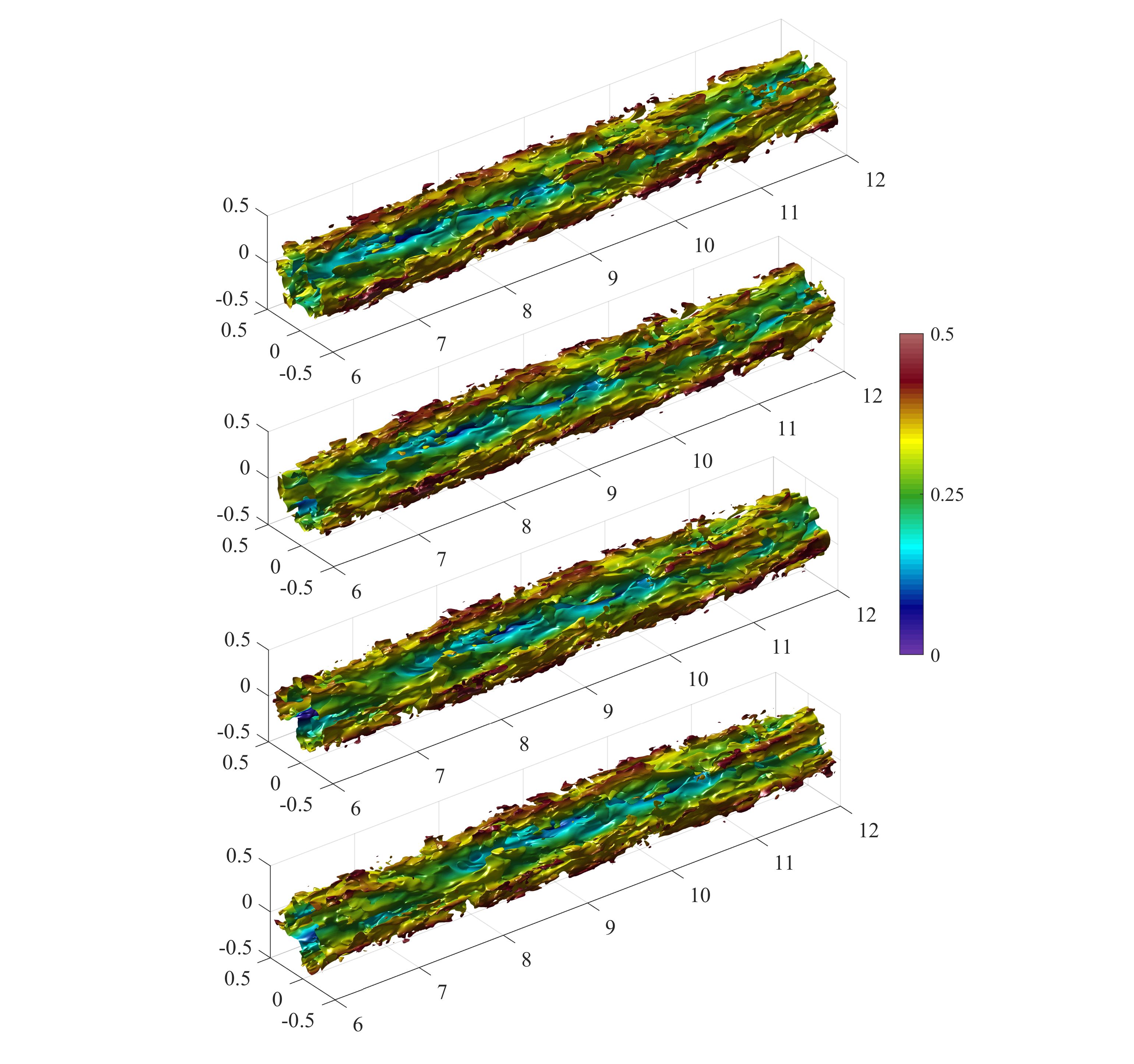Understanding energy losses in unsteady turbulent flows
This research project aims to examine the dynamics of temporally accelerating and decelerating turbulent flows by using a series of direct numerical simulation (DNS) data sets. It is expected that a detailed characterisation of the temporal evolution of the flow dynamics for unsteady flows, will shed light on how energy and momentum redistribute as a turbulent flow evolves between two different Reynolds numbers. Moreover, the data sets obtained during this investigation will be used to understand further the mechanisms by which turbulent eddies are generated or decay in unsteady flows based on the linear stability theory. In other words, it will be examined how perturbations are amplified or weakened as a flow is accelerated or decelerated. It is expected that the results of this research aid in the optimisation of fluid transportation techniques. From a practical perspective, it is expected that the physical understanding arising from this investigation will lead to the improvement and calibration of unsteady friction models used for engineering purposes
Area of science
Fluid Mechanics
Systems used
Magnus
Applications used
Nek5000The Challenge
The problems we intend to solve are the following:
1. Understand and characterise the different stages underwent by linearly accelerating/decelerating flows based on their flow dynamics.
2. Determine the dominant mechanisms responsible for the generation or attenuation of turbulence in accelerating and decelerating flows, respectively.
3. Use the series of DNS data sets obtained from these series of studies to improve the existing 1D unsteady friction models
The Solution
To address these research objectives we have conducted the following:
1. Run a series of DNS simulations of accelerating/decelerating turbulent pipe flow between two steady Reynolds numbers and gather volumetric flow fields with a very high spatiotemporal resolution, using the spectral Navier-Stokes solver Nek5000 V19.
2. Post-process and analyse the data sets using different deterministic and statistical approaches.
3. Use the flow statistics to understand and characterise the transitional behaviour experienced by accelerating/decelerating flows.
4. Use the compiled data sets to develop a 1D empirical unsteady friction model useful for engineering approximations
The Outcome
The datasets obtained from the numerical simulations conducted in the Magnus HPC have already been analysed and processed. As a result, the research group has been able to produce several research papers. Some of the journal papers already accepted and/or published throughout 2021 are:
• Guerrero, B., Lambert, M., & Chin, R. (2021). Transient dynamics of accelerating turbulent pipe flow. Journal of Fluid Mechanics, 917, A43. doi:10.1017/jfm.2021.303
• Guerrero, B., Lambert, M., & Chin, R. (2021). Precursors of backflow events and their relationship with the near-wall self-sustaining process. Journal of Fluid Mechanics, In Press. doi:10.1017/jfm.2021.1082
In addition to this, a journal paper associated with the development of a 1D friction model is under review, and a research paper related to the transient process of decelerating flows is being drafted.
List of Publications
• Guerrero, B., Lambert, M., & Chin, R. (2021). Transient dynamics of accelerating turbulent pipe flow. Journal of Fluid Mechanics, 917, A43. doi:10.1017/jfm.2021.303
• Guerrero, B., Lambert, M., & Chin, R. (2021). Precursors of backflow events and their relationship with the near-wall self-sustaining process. Journal of Fluid Mechanics, In Press. doi:10.1017/jfm.2021.1082

Figure 1. Instant_WSS: Instantaneous wall shear stress normalized by the instantaneous bulk velocity and the pipe radius at different time locations. The left column corresponds to case A1 (accelerating), and the right column corresponds to case D1 (decelerating).







